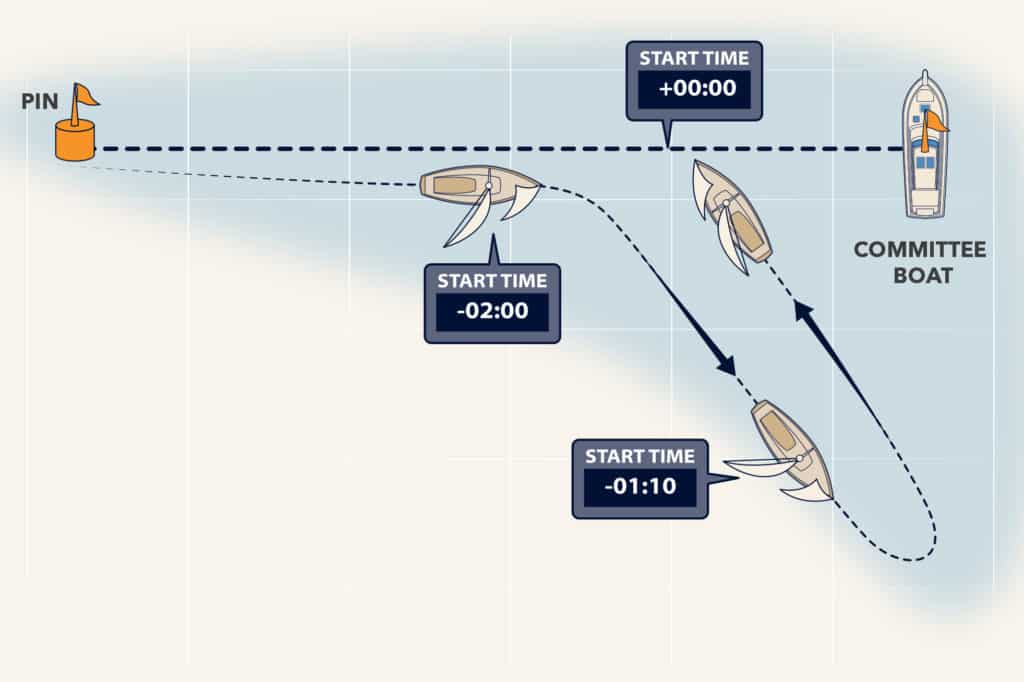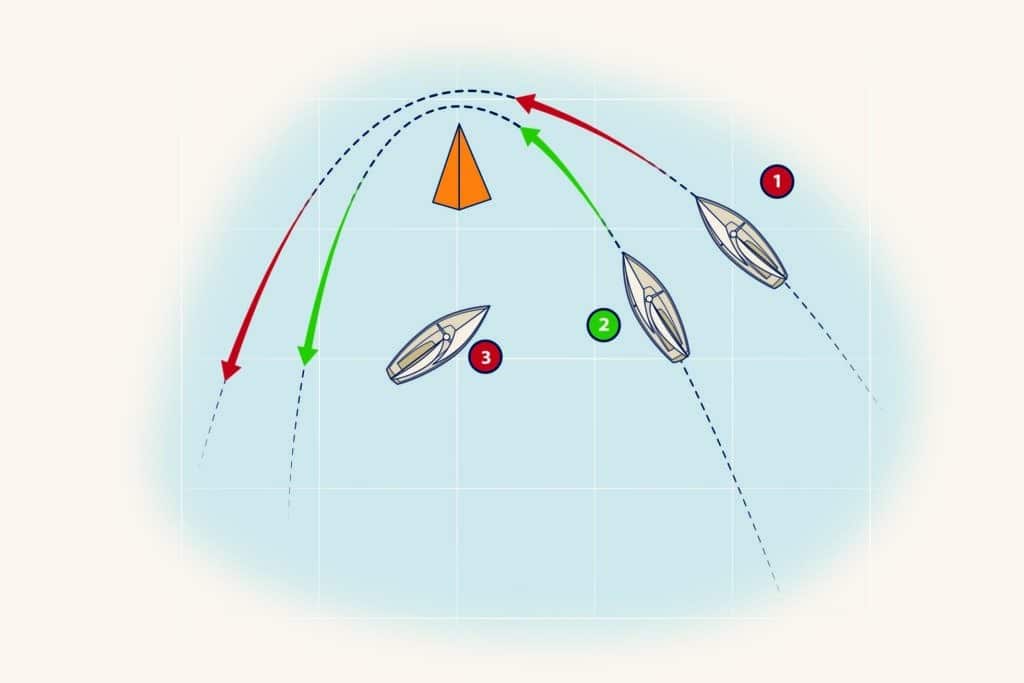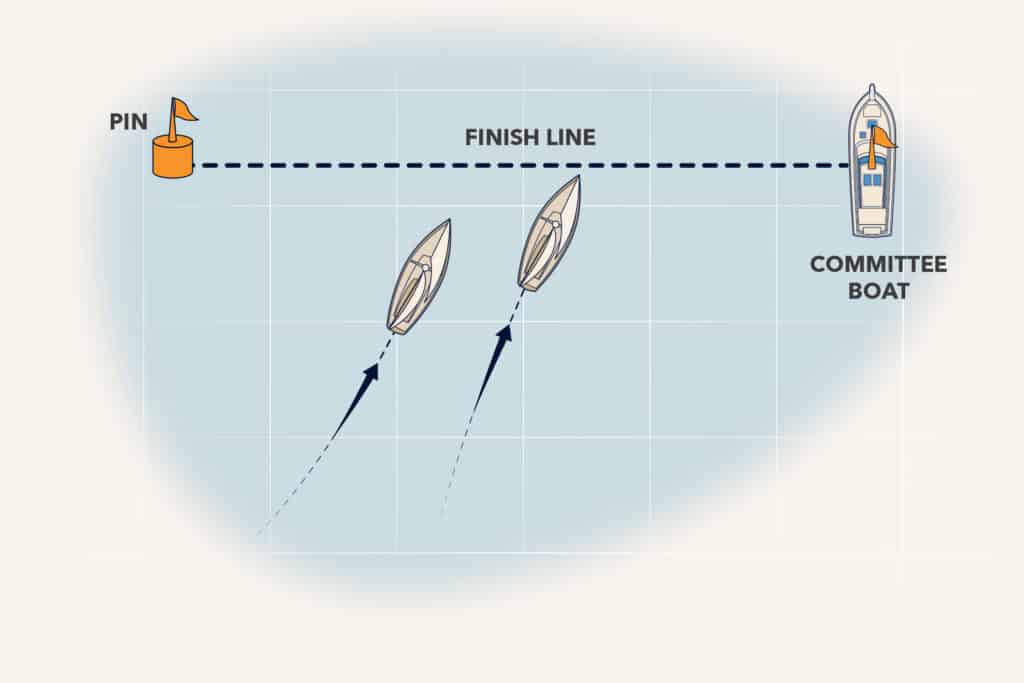
Racing yachts these days are becoming increasingly complicated machines that require highly skilled professionals to operate. For the average sailor, though, foiling multihulls and high-stress regattas may hold little interest. But there are times when it’s rewarding to be out enjoying an afternoon on the water with other sailors. Perhaps you are inspired to take part in a charity regatta to support a worthy cause, or your yacht club or community sailing organization has assembled a fleet of boats for a fun race. Now, those sorts of events might just suit your style. And of course, it is more fun to actually win the race. I have participated in a variety of charity events over the years. Many of the crews at these events do very little racing, but even still, they want a good result. Here are some thoughts on how to race safely and arrive at the finish line ahead of the fleet.
To start with, before you even step on your boat, carefully read the sailing instructions provided by the race organizers so you understand the geography of the course and the starting routine. Study the weather, and set up the sails for the predicted wind conditions. Make sure everyone in the crew has the appropriate clothing.
Once you leave the dock, hold a crew meeting to discuss safety procedures, and brief everyone aboard on the course. At this time, assign each person a specific job. Everyone appreciates the opportunity to participate in the race, and if it’s a charity event, encourage everyone on board to contribute something to the cause.
Winning the Start

Getting off the line with clear wind — and in the lead — will give your crew a big morale boost. Most race committees use a five-minute starting sequence of flags and horns, and some also broadcast the start over VHF radio on a designated channel. Again, preview the sailing instructions so you know what to expect. The first horn will sound five minutes before the actual start time, marking the beginning of the countdown. Have a crewmember assigned to time the horns; if you miss the five, you can still recalibrate at the four-minute horn. A single horn will sound again with one minute to go, followed by the actual starting horn.
Listen carefully after the start, and monitor the VHF radio channel assigned by the race committee to see if your boat may have been recalled for being over the starting line early.
Many regattas will have different starts for classes of boats, or boats in a particular size range. Make sure you know when your class is scheduled to start. Some regattas use a pursuit, or staggered, start the theory being that boats of different speeds will all reach the finish at about the same time. If you’re sailing in one of these races, make sure you know your starting time and monitor your VHF for any updates from the race committee.
When starting a conventional race, I like using a time-run approach. Plan to be on the start line two minutes before the start, then sail away on a reciprocal course to what you’ll use when you approach the line for real. At one minute, 10 seconds before the start, tack or jibe and maneuver back toward the line, preferably on a starboard tack so you’ll have right of way over any port tackers you encounter. The tack or jibe will take about 20 seconds. At this point, accelerate to full speed toward the line. Try to stay away from other boats when you make your final approach. If you seem to be early, ease out your sails to slow down, but make sure you are sailing at full speed when the gun sounds. Often the right-hand side of the line will tend to be more crowded, so you can find room for more comfortable maneuvering if you pick a point closer to the pin (the buoy marking the other end of the starting line).
Know the Rules
The basic Racing Rules of Sailing are designed to keep boats from having a collision. The starboard-tack boat always has the right of way over the port-tack boat. On the same tack, the leeward boat has the right of way over the windward boat. An overtaking boat has to stay clear of a boat ahead. And the inside boat at a turning mark has the right of way on an outside boat making the turn. My rule when racing is to carefully watch out for other boats, don’t push the rules too hard, and give way if another boat has the right of way. After all, no one wants to spend time in a protest room after the race — or face costly repairs.
Sailing the Course
Look for the best wind to determine the favored side of the racecourse. You can see what the wind is doing by observing the dark patches on the water that indicate gusts. It sounds simple, but races are won by sailing faster in stronger wind. Assign one person to serve as tactician. This person watches the wind and looks for shifts. If you see more wind on the other side of the racecourse, then head in that direction. A word of caution, though: Limit maneuvering. Every time you make a turn, you slow down and lose distance. On a 1-mile windward leg, two to four tacks are acceptable.
At all points along the course, the helmsman and sail trimmers should work together. The tactician gives regular reports about your speed compared to the other boats. When you are fast, just keep sailing, but if you seem to be sailing slowly, experiment with your sail trim to help you keep your speed up.
Look up at the mainsail. Are the telltales trailing off the leech all flowing evenly? If not, you are likely overtrimmed. A helpful reference is to trim the sail so the top batten is parallel to the boom.
Telltales on the luff of the jib should flow evenly. If the top telltale luffs first, then adjust the jib fairlead on your track forward. If the bottom telltale luffs first, then move the lead aft. Concentrate all the time. You will be popular if you let several members of the crew spend some time steering.
Position the crew so they stay low, and keep the bulk of the crew weight out of the ends of the boat. Often a boat will sail fastest with a slight leeward heel. Move the crew out to the rail, or lean in to maintain the fastest angle of heel. You will learn what’s right by watching your performance compared to the other boats around you. When you are sailing fast, note your angle of heel and try to maintain it.
At the Mark

Approach the turning mark with speed, and make sure to leave it to the side indicated in the racing instructions. Remember the inside boat at the turn has the right of way. Avoid making a fast turn, because the boat will slow down. Turns should be gradual, like a skier making continuous turns on a downhill run. If you are not overlapped then give the boat ahead of you room to make the turn.
Before making that turn, ask the tactician which side of the course looks better, and let your crew know whether you plan to continue with sails set to the same side or if you’ll quickly tack or jibe.
On the downwind leg, try to sail in stronger wind, and avoid being near other boats. Simply keeping your wind clear will help your boat advance.
The biggest mistake many sailors make on the run to the leeward mark is getting wrapped up with other boats. Look for a good time to jibe away from the rest of the fleet. Again, your goal is to sail in clear wind.
Prepare your crew well in advance of any maneuver. Everyone should stay low in the boat, and walk softly from one side to the other. On a run, reshape your sails by easing the outhaul on the mainsail. A fuller sail is faster when sailing with the wind. If you are on a reach, move the jib leads forward to keep the telltales flowing evenly. Many boats use a boom vang. Look up the mainsail and make sure the top batten is lined up with the boom. If the batten is curving inward, this is an indication that the vang is too tight. When sailing straight downwind, a whisker pole might be used to wing the jib out to windward. In this case, be sure there is equal tension on the foot and leech of the sail.
The downwind leg is often the time when the skipper breaks out snacks or drinks. Be strategic when passing around sandwiches and water. It is best to do these kinds of things when the crew is not in the middle of a maneuver. Assign one crewmember to be the boat custodian and make sure everything is cleaned up, lines are clear and everyone is in the correct position.

Around Again
The leeward mark is an important milestone in every race. You are shifting gears from sailing downwind to upwind. Prepare your crew well before the turn. Tighten the outhaul, and move the jib leads to their upwind position. If it’s windy, make sure the crew has the proper clothing on before making the turn. Remember, conditions change when you’re sailing closehauled again. On the first leg, you likely learned the more favorable side of the racecourse. If there was better wind on the starboard side of the course, then it will likely be better again on the next leg. Patterns tend to repeat on the water.
Keep Working
Don’t give up, regardless of your position. Many leaders have lost races by being careless, and many trailing boats have made big gains on the final leg to the finish. Talk about your performance. What have you learned during the race about speed and position? The skipper and tactician should give an update, and add in a pep talk if needed. Take the attitude that you are always trying to gain on the fleet.
Heading for Home
On the final leg, be like a runner sprinting for the finish line. Keep the crew in their racing positions. Approach the finish line on starboard tack when possible so you have right of way on other boats that are finishing at the same time. After crossing the line, sail clear of the area. If there is another race, gather the crew for a debrief. Discuss things that went well, and what can be done better. This is the time to hydrate, prepare sails, loosen up and get ready for round two. You are in the groove now, and can improve. Restate your goal and discuss what your strategy will be for the next start.
If you’re headed for the dock, whether you win, lose or come close, always end the day with a review of the race and a pep talk. The next phase of the day is likely a party back on shore. “Sail hard, play hard” is a good way to live life. Congratulate the winners, thank the crew and feel good that your guests had a good time — and, if it’s a charity regatta, that you helped a good cause reach its goal while you had fun on the water.
– – –
Gary Jobson is a CW editor at large. He’s an America’s Cup-winning tactician and longtime chairman of the Leukemia Cup Regatta, which has, to date, raised some $54 million for cancer research.








